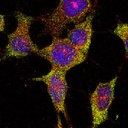Effects of goal-directed fluid therapy with different lactated Ringer's: hydroxyethyl starch ratios in hemorrhagic shock dogs.
Słowa kluczowe
Abstrakcyjny
The effects of goal-directed fluid therapy, with lactated Ringer's (LR) and 6% hydroxyethyl starch (HES) solution, on hemorrhagic shock dogs are unknown. We aimed to determine the optimal LR: HES ratio for the resuscitation of hemorrhagic shock dogs. Hemorrhagic shock was induced in 40 ventilated dogs by drawing an estimated 60% blood volume. The animals were randomly divided into five groups (N = 8) according to the LR: HES ratio of the resuscitation fluid (3:1, 2:1, 1:1, 1:2, and 1:3), and were then resuscitated for 24 h to reach the stroke volume variation (SVV) and hemoglobin (Hb) goals by fluid infusion and autologous blood perfusion. The extravascular lung water index (EVLWI), pH, partial pressure of oxygen (PaO2), base excess (BE), sodium, chloride, Hb and creatinine clearance (Clearcrea) were checked after 24 h (R24). The EVLWI of the 3:1 group at R24 were higher than that of the 1:3 group and the baseline value (P < 0.05), whereas the PaO2 was lower (P < 0.05). In contrast to the 3:1 group at R24 and baseline, plasma chloride and sodium in the 1:3 and 1:2 groups increased; however, pH, BE, and Clearcrea decreased (P < 0.05). No significant differences were found in the 1:1 and 2:1 groups at R24 compared with baseline (P > 0.05). Resuscitation with LR and HES at 2:1 and 1:1 ratios are superior in maintaining the acid-base, electrolyte, and lung water balances as well as renal function in hemorrhagic shock dogs than at ratios of 3:l, 1:2, and1:3.


